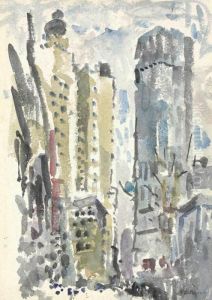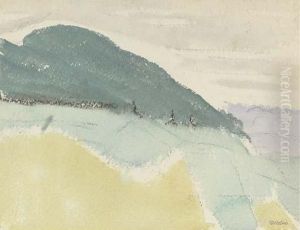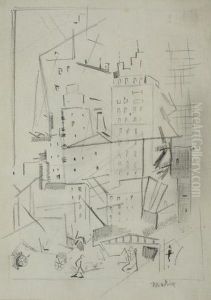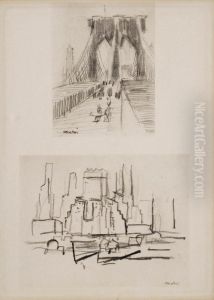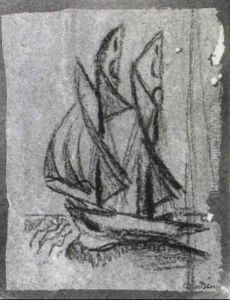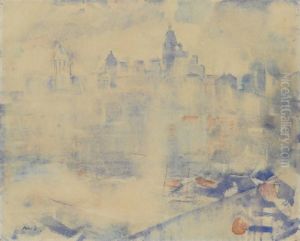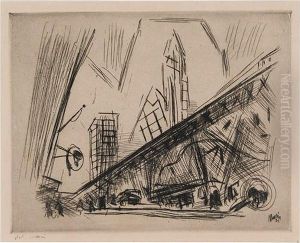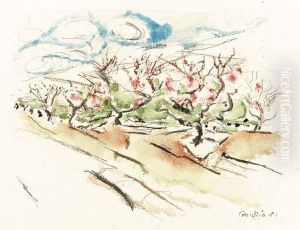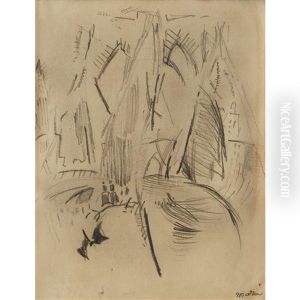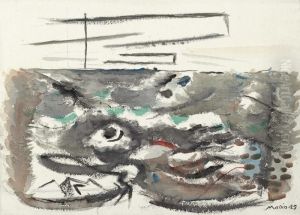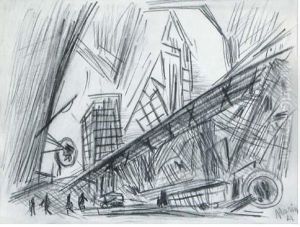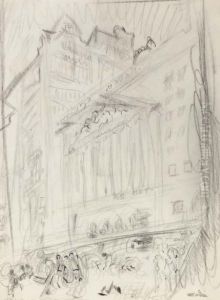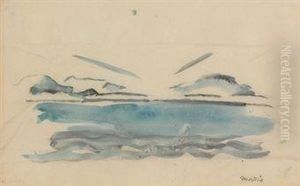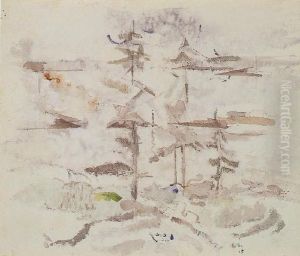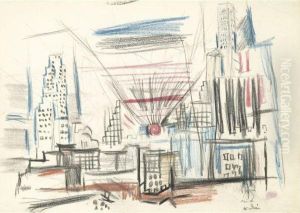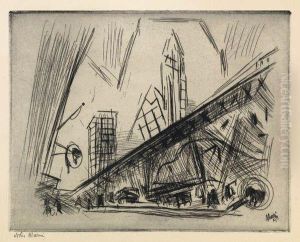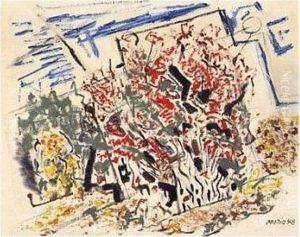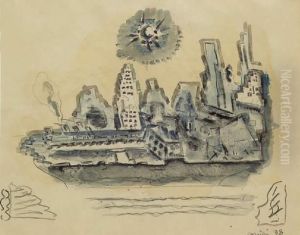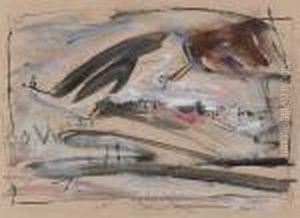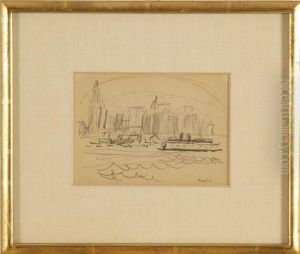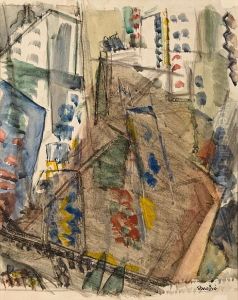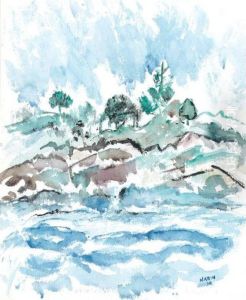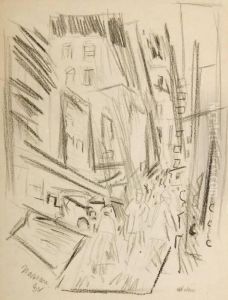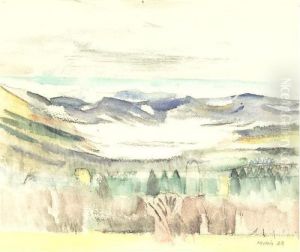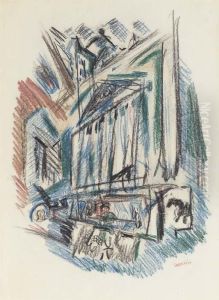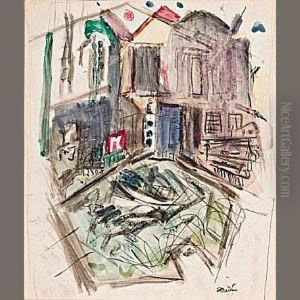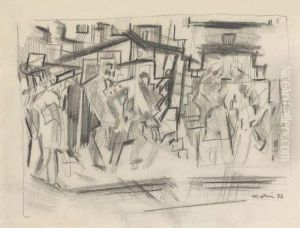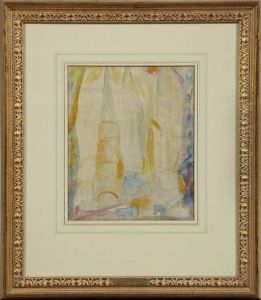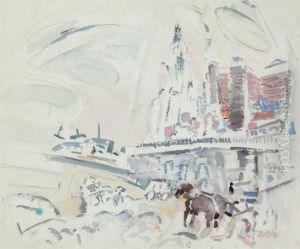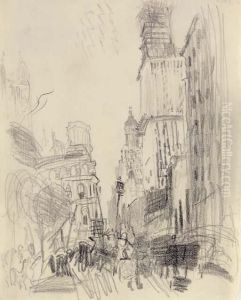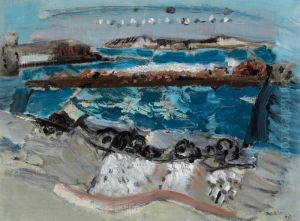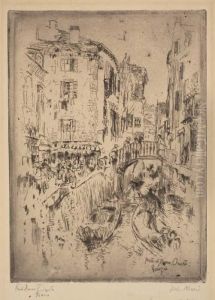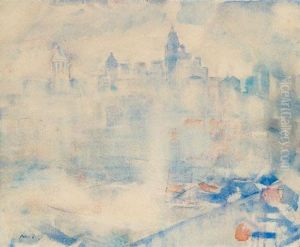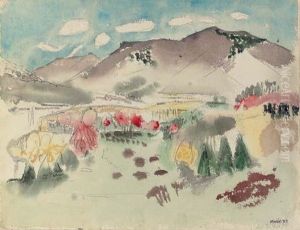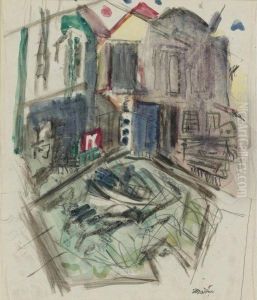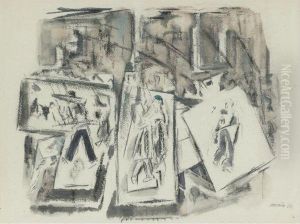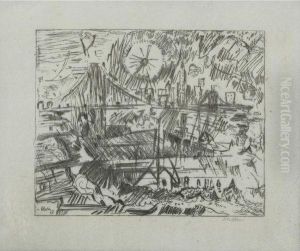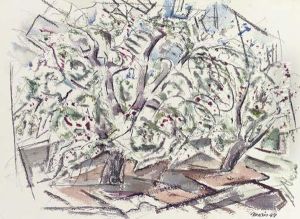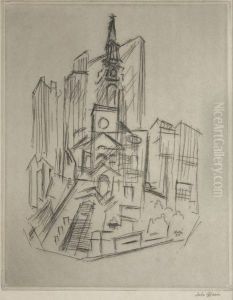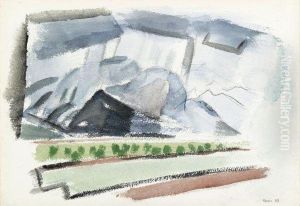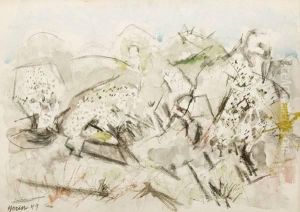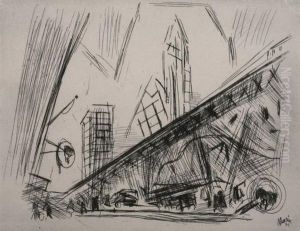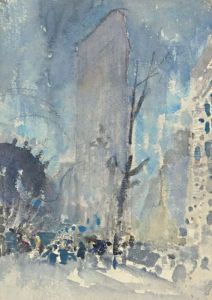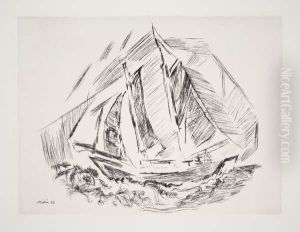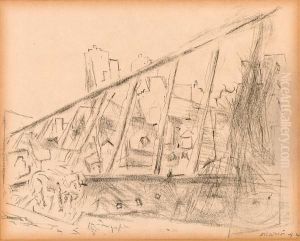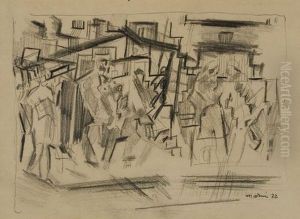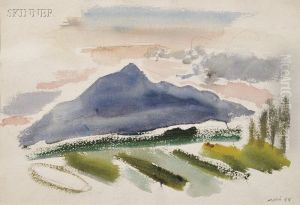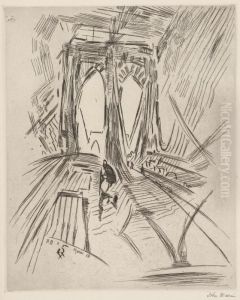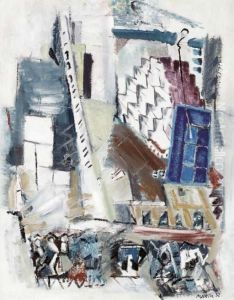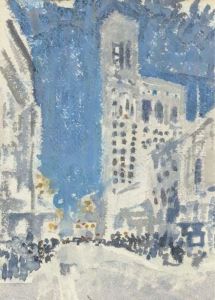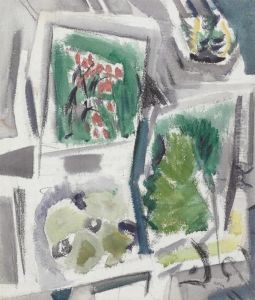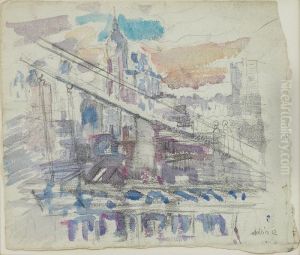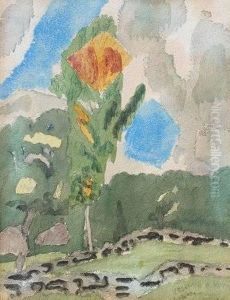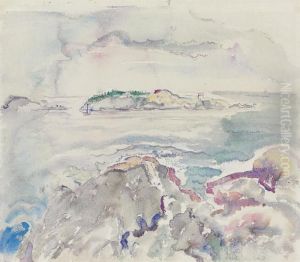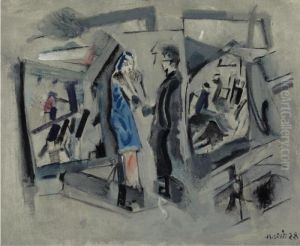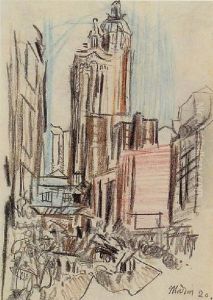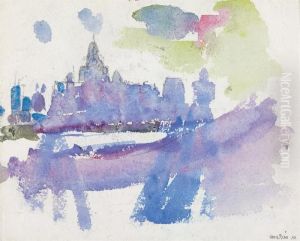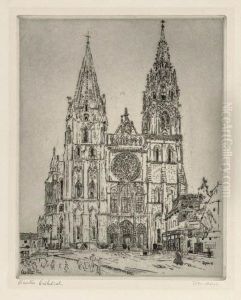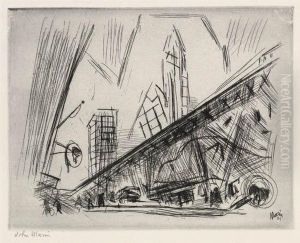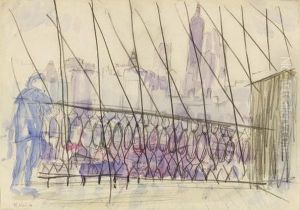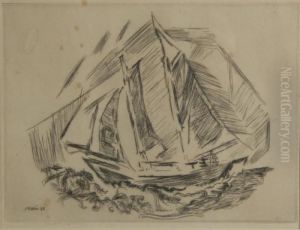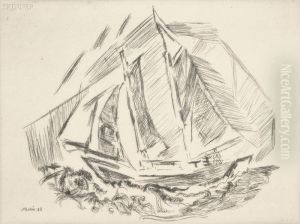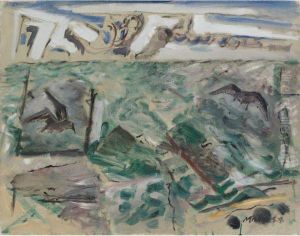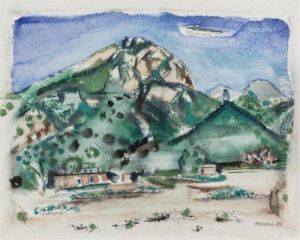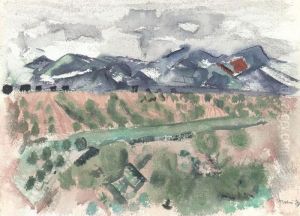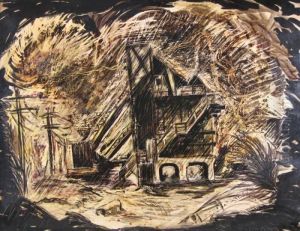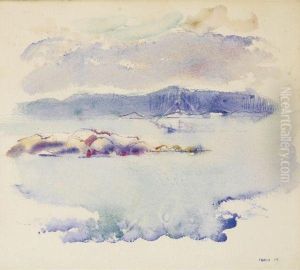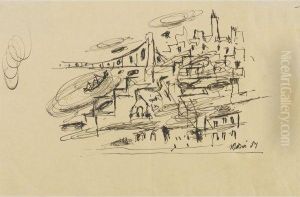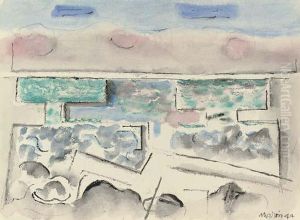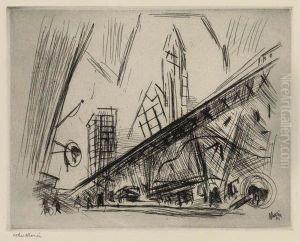John Marin Paintings
John Marin was an influential American artist known for his abstract landscapes and watercolors. Born on December 23, 1870, in Rutherford, New Jersey, Marin's early life was shaped by a keen interest in the arts, which led him to pursue an education in architecture at the Stevens Institute of Technology. However, his passion for painting soon took precedence, leading him to study at the Pennsylvania Academy of the Fine Arts and later, in Europe, at the Académie Julian in Paris from 1905 to 1906. It was in Europe that Marin was exposed to the work of the Impressionists and Fauvists, influences that would become apparent in his own style.
Marin's career began to take shape after his return to the United States, where he became part of the circle of artists associated with the photographer Alfred Stieglitz. Stieglitz's gallery, 291, hosted Marin's first solo exhibition in 1909, marking the beginning of a lifelong friendship and professional relationship. Marin's work from this period demonstrates a blend of European modernist influences with the emerging American modernist movement, characterized by dynamic compositions, vibrant colors, and an innovative approach to capturing landscapes and urban scenes.
Throughout his career, Marin focused predominantly on the American landscape, particularly the rugged coasts of Maine and the bustling streets of New York City. His ability to abstract these landscapes into compositions that conveyed the emotional and physical experience of the place set him apart from his contemporaries. Marin's work evolved over the decades, incorporating more abstract elements and exploring the interplay between form and color, though he never completely abandoned representational art.
Marin's contributions to American art were widely recognized during his lifetime. He was celebrated for his technical mastery of watercolor, a medium that he elevated to the status of oil painting in terms of its artistic value. His work was featured in numerous exhibitions, including several retrospectives, and he was a significant figure in the promotion of modernism in American art.
John Marin passed away on October 1, 1953, in Cape Split, Maine. Today, his work is held in major collections worldwide, including the Museum of Modern Art in New York and the National Gallery of Art in Washington, D.C. Marin's legacy as a pioneer of American modernism, particularly in the realm of watercolor, remains influential. His exploration of abstraction and representation, combined with his unique approach to landscape and urban scenes, continues to inspire artists and captivate art lovers.
